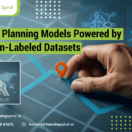Efficient route planning is more than just finding the shortest distance between two points; it’s about optimizing for a myriad of real-world variables. From traffic congestion and road closures to delivery windows and driver preferences, the complexities are immense. Traditional models often fall short in capturing these nuanced, human-centric factors. This is where human-labeled datasets emerge as a game-changer, providing the rich, contextual information necessary to build truly intelligent AI training data for route planning models.
For universities, research institutes, and AI-driven companies, the quest for superior AI performance in logistics and transportation is paramount. The difference between a good route and a great route can translate into significant cost savings, reduced environmental impact, and improved customer satisfaction. The foundation of this intelligence lies in precisely annotated data that mirrors human understanding and decision-making.
Why Human-Labeled Data is Indispensable for Route Planning AI 
Machine learning models, no matter how sophisticated, are only as good as the data they are trained on. In the context of route planning, this means feeding the AI model with information that goes beyond raw sensor data or static map details. Human input brings an invaluable layer of contextual understanding, experience, and qualitative assessment.
Key Contributions of Human-Labeled Data:
-
Understanding Nuance and Context: Humans can discern subtle cues that machines often miss. For example, a “no left turn” sign might only apply during peak hours, or a seemingly shorter route might involve a dangerous intersection. Labelers can annotate these specific conditions.
-
Capturing Real-World Constraints: Factors like delivery vehicle size limitations, preferred parking spots, tricky loading dock access, or pedestrian-heavy zones are all elements best identified and labeled by human review.
-
Enhancing Predictive Accuracy: By labeling historical route data with real-world outcomes (e.g., actual travel times vs. predicted, unexpected delays), models learn to anticipate and adjust more effectively, leading to superior AI model accuracy.
-
Personalization and Preference Learning: Different drivers or delivery types might have distinct preferences. Human labelers can help create datasets that reflect these preferences, allowing AI models to offer tailored route suggestions.
The Data Labeling Process: Fueling Smarter Routes
Developing robust route planning models with human-labeled data involves a meticulous data annotation process. This isn’t a one-size-fits-all approach; it requires specialized techniques for various data types relevant to navigation and logistics.
Types of Data Requiring Human Annotation:
-
Map Data Annotation:
-
Polygon Annotation: Delineating “no-go” zones (e.g., construction sites, highly congested areas during specific hours), residential zones unsuitable for heavy vehicles, or special permit areas.
-
Polyline Annotation: Marking preferred paths, specific lanes for certain vehicles, or routes with specific characteristics (e.g., scenic routes, routes avoiding tolls).
-
Point Annotation: Pinpointing critical locations like traffic lights, speed cameras, delivery drop-off points, or points of interest with associated attributes.
-
-
Image/Video Annotation for Street-Level Data:
-
Object Detection and Classification: Identifying road signs, traffic signals, pedestrian crossings, lane markings, and potential hazards from street-level imagery. This feeds into computer vision models that enhance real-time decision-making for autonomous vehicles.
-
Semantic Segmentation: Pixel-level labeling of roads, sidewalks, buildings, and vegetation to help autonomous systems understand their environment comprehensively.
-
Lidar Annotation: For self-driving applications, annotating 3D point cloud data to identify objects, their distances, and movements in complex environments.
-
-
Text and Audio Labeling for Contextual Cues:
-
Sentiment Analysis: Labeling feedback from drivers or customers about routes (e.g., “this road is always bumpy,” “delivery was late due to unexpected traffic”) to identify route pain points.
-
Named Entity Recognition (NER): Extracting key information from dispatch notes or incident reports like specific addresses, delivery times, and reasons for delays.
-
Speech-to-Text Transcription: Converting driver voice logs or customer service calls into text for analysis of route-related issues.
-
Building Advanced Route Planning Models with Learning Spiral AI
At Learning Spiral AI, we understand the critical role of high-quality AI training data in developing intelligent systems. Our expertise in data labeling services ensures that your route planning models are powered by datasets that are precise, consistent, and reflective of real-world complexities. We partner with universities, research institutes, and AI-driven companies to provide tailored solutions for their unique data annotation needs.
The Impact on Various Sectors:
-
Logistics & E-commerce: Optimizing last-mile delivery, reducing fuel costs, and meeting tight delivery schedules. This directly translates to significant operational efficiencies and customer satisfaction.
-
Autonomous Vehicles: Providing the granular, context-rich data required for self-driving cars to navigate safely and efficiently through dynamic urban and rural environments. Our video/image annotation services are crucial here.
-
Public Transportation: Improving bus and train scheduling, predicting passenger flow, and optimizing routes based on demand patterns.
-
Urban Planning: Simulating traffic flow, identifying congestion points, and planning infrastructure improvements with data-driven insights.
The Future is Data-Driven: Enhancing AI Model Accuracy
The demand for more sophisticated and adaptive route planning models will only grow. As AI systems become more integrated into our daily lives, the need for robust, human-validated datasets will continue to be a cornerstone of their success. Investing in high-quality data annotation is not just about improving current models; it’s about building a resilient, intelligent infrastructure for the future.
We empower organizations to move beyond generic mapping solutions, offering the specialized machine learning data required to build truly competitive and efficient route planning systems. By leveraging expertly labeled datasets, you can significantly enhance your AI model accuracy and unlock new levels of operational efficiency.
Ready to Optimize Your Route Planning AI?
The journey to superior route planning starts with superior data. Don’t let insufficient or inaccurate data hinder the potential of your AI initiatives.
Contact Learning Spiral AI today to discuss how our bespoke data labeling services can provide the precise, high-quality AI training data you need to revolutionize your route planning models. Explore our solutions for image/video annotation, text, and audio labeling, and discover how we can help you achieve unparalleled AI model accuracy.




